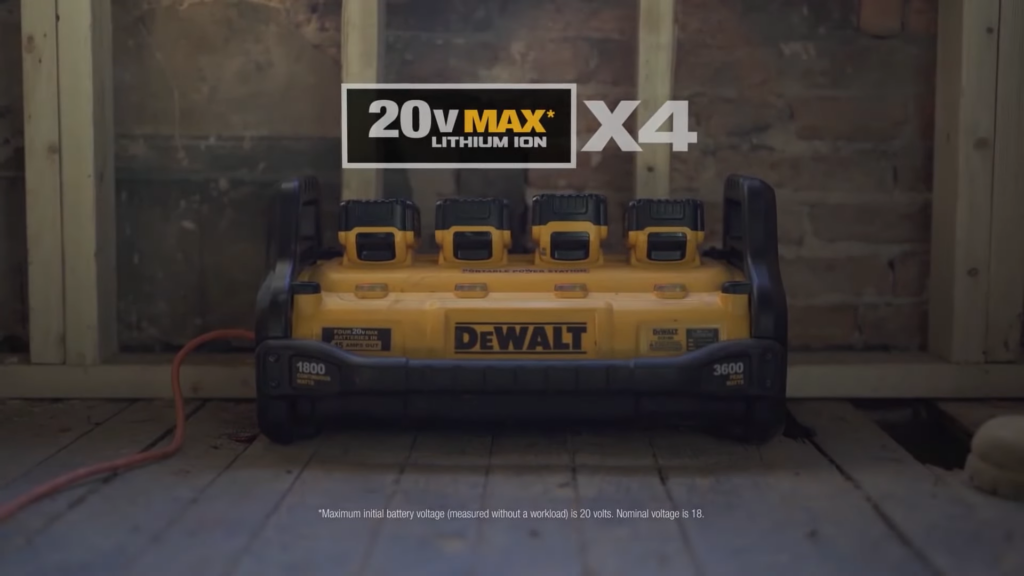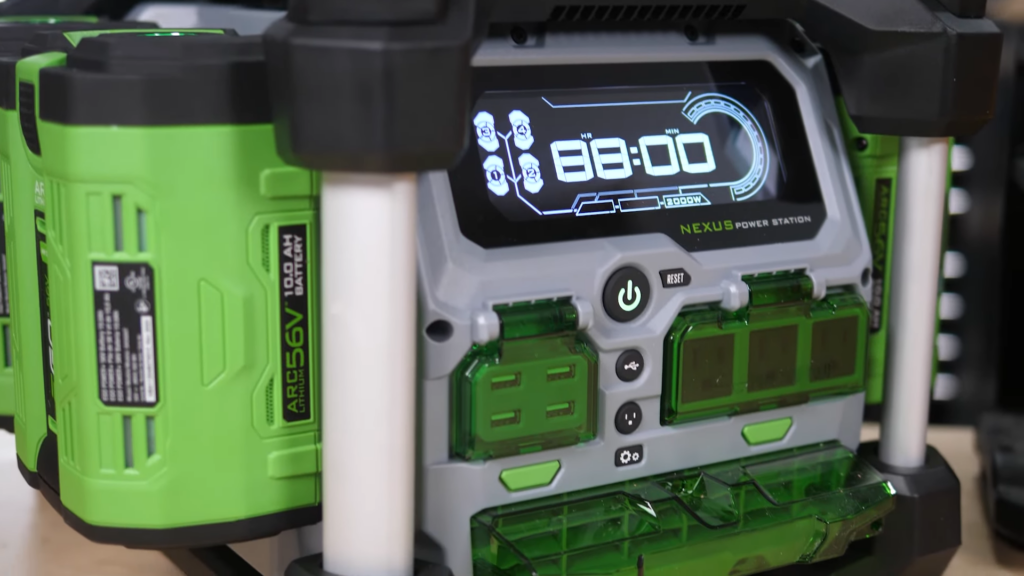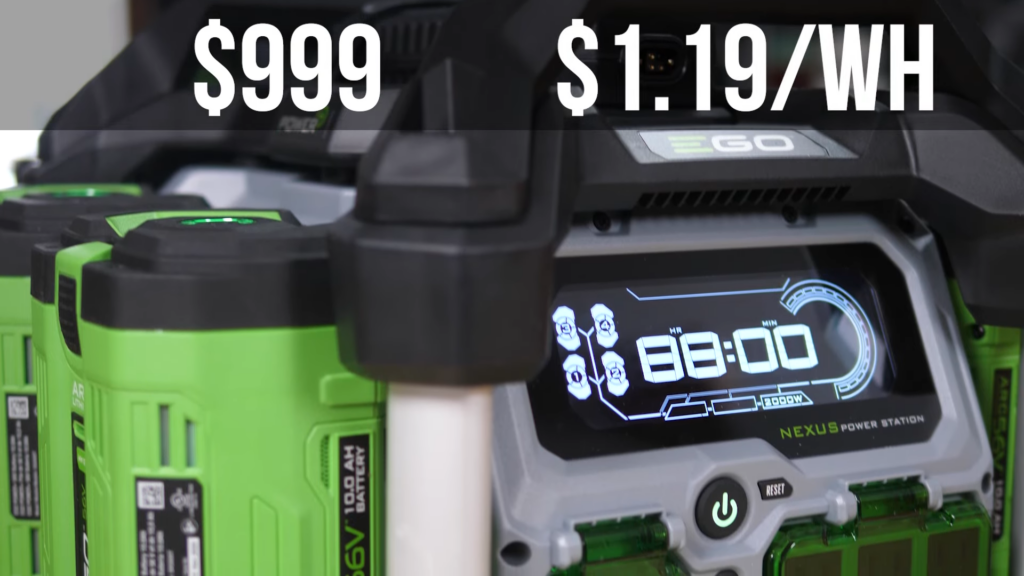NO MORE Gas Generators! MEGA Inverter Head 2 Head! Milwaukee MX FUEL Carry-On vs EGO Nexus vs DeWALT
So this video was supposed to be pretty straight forward. We’ve got the highly anticipated Milwaukee MX Carry-On, our trusty DeWALT power station which we’ve used to keep our fridge cold through MANY power outages, and the legendary EGO Nexus Power Station. We figured we’d test these guys under the same conditions, go over their stats and features, and hopefully help you make an informed purchase. But things didn’t go as planned. Some numbers we got were confusing, the Carry-on has a problem, which Milwaukee says is a feature, and at the last minute EGO told us something they didn’t plan to tell us. This is going to be an interesting review, of the 3 top power inverters in the power tool industry. Let’s go!

So lets start with our tried and true. We’ve had the DeWALT Portable Power Station for a couple years now. AS I mentioned, we’ve used it often to keep our fridge running while the power’s out. It takes any DeWALT 20v Max batteries, including Flexvolt, and provides 1800 Watts of continuous power and 3,600 watts peak. That’s handy for power tools that spike when you turn them on.

Besides being a power station, it’s also a simultaneous charger. Not sequential, so it charges all 4 batteries at the same time, at a charging rate of 2 amps. It’s 18lbs without batteries, and unlike the others, It’s a modified sine wave type, which means it’s not great for delicate electronics.

The power station is very simple to use. Plug it into the wall, and it’s a charger. Unplug it, and press the single power button, and it’s a giant battery ready to power just about anything you plug in. For today’s test, we have it packed with 4 9Ah batteries. For our tests to make sense, we calculated Watt Hours for each battery setup, and then divided run time by those Watt hours.

Alright let’s move on to the EGO. Now when it comes to features, this thing is in a completely different class. It has this huge LCD display that shows you how much power is available, how much is being pulled, and how much longer it will last. Super Convenient. There’s also an app interface but we haven’t used it yet.

The EGO provides 3000 peak watts and 2000 continuous. It has 3 120V outlets, and 4 usb ports, and it’s much heavier than the DeWALT, at 30lbs without batteries. For the tests, we used the 2 7.5AH batteries that came with the NEXUS.

On to the new kid on the block. The Milwaukee MX FUEL Carry-On. This is our first hands-on experience with the MX platform, and you realize immediately that this is meant for serious job site work. The numbers make it sounds like it belongs in this group. 3600W peak, 1800W continuous, with 2 120V outlets. But even the batteries feel like industrial equipment.

The connections are more solid, and the inverter itself is a monstrous 30lbs, and surrounded by this steel protective cage. I remember when we first saw it, like many people, we wondered why it wasn’t designed around PACKOUT, but to be honest, this feels FAR more solid than the packout system, and I think that makes sense when you look at Milwaukee’s target audience for the MX platform. For the tests, we’re using the 2 MX XC406 batteries that are 72v and 6ah each.

On to the tests. We setup all three stations with an identical space heater, and then ran them till they quit. To be honest we fully expected them all to be nearly identical based on time per watt hour. But they weren’t. The Milwaukee and the DeWALT were almost identical, with the DeWALT coming in at 2.52 seconds per watt hour, and the Milwaukee at 2.44. It was the EGO that didn’t do as well.

It came in at 2.2, or about 5-10% less efficient than the others. It didn’t matter how many times we tried. We even swapped out the 7.5ah batteries with the new 10ahs, and got the exact same number.
We reached out to EGO for an answer to this output descrepency, and they told us that we should expect the Nexus to be 5% less efficient than the DeWALT, because they use a Close Loop boost circuit vs an open loop boost circuit in the DeWALT. We don’t know if the Milwaukee uses the same thing, but it would make all the numbers make sense.
EGO’s engineers told us that the close loop guarantees 120V of constant output, except for the very last few minutes when the battery voltage is very low. So you get more consistent power, which is good for your electronics, but at the cost of around 5% efficiency.
So no matter what we hook these up to, the EGO will always power the item for around 5% less time, but that’s a difference of 3 minutes for every hour of use. So we don’t see that being very significant.

Now we’ve had problems using Lithium-Ion batteries in the bitter cold, and it just so happened to be 6 degrees outside while we were testing, so we brought them all outside and ran the test again there. The numbers came back almost identical with the EGO losing 1/20th of a second, the DeWALT staying the same, and Milwaukee GAINING 1/20th of a second. So it seems as long as the batteries are kept warm, they’re likely to work just fine in the freezing cold, at least for the 40 minutes we ran them.
So if they all work really well, we should talk about pricing. The Milwaukee is the most expensive for sure. But to help make a fair comparison, we’re going to look at the cost per Watt hour.

The MX FUEL Carryon Kit is $2100 with 2 6AH batteries, for a total cost of $2.55 per watt hour.

The DeWALT Power Station with 4 12ah batteries would be $1500 for a total cost of $1.74 per watt hour, and the

and the EGO, at $999 with 2 7.5AH batteries comes out only $1.19 per watt hour.
And when we looked at additional batteries, the numbers were just as dramatic. The MX FUEL was $1.39 per WH, the Dewalt was $1.15, and the EGO was only $0.89. So the EGO is 5% less efficient, but the batteries are better priced.

And then there’s the capacity. You could always load up your truck with extra batteries, but if you just want to grab your inverter, you’re limited by the number of watt hours you can install at once. Milwaukee, maxed out with 2 406 MX batteries, offers 864 WH of power. The DeWALT, when filled with 4 12AH Flexvolt batteries, comes in at an identical 864 WH of power. But the EGO, capable of now supporting 4 10AH batteries, provides a staggering 2240 WH. So if you want to plug something in and forget about it for a long time, Like a refrigerator while you sleep, then EGO is the obvious choice.

Now there are two more things you should consider. One I can tell you, and one I can’t. Yet. So first off, almost immediately after the MX Carry-On was released, we heard complaints from our viewers, and found negative reviews online referring to the device shutting off after an hour.
To confirm this, we reached out to Milwaukee, who told us that this is a feature. If the power being pulled from the MX Carry-On is less than 80 watts, it will shut down after an hour, to preserve power. And to be honest with you, we are super confused by this choice. After asking around we came up with several situations where this would be less than ideal. Imaging running 8 LED 60watt equivalent bulbs to light your jobsite. You could light multiple rooms, where multiple people could be using power tools. And suddenly, after only an hour, the lights go out. Another person was concerned about using it to power a fan to circulate air while spraying chemicals, only to have the fan shut off. There have been complaints about people trying to charge their laptops, only to come back and find the MX shut off. We looked, and only the largest Macbooks pull more than 80watts while charging.
Whether that’s a problem for you, is up to how you plan to use it. But it’s a reality of the MX FUEL Carry on. If you don’t pull 80watts, it’ll shut down to save batteries. Keep that in mind.
Now that thing I can’t tell you. EGO told us something and then told us not to tell you. So I won’t. But I wish I could, because it concerns the Nexus. And it’s about something many people have been asking for. Fine, no hints, but here’s the thing. I AM allowed to tell you, and SHOW you, on Friday. So this Friday, on our Power Tool Week in Review, we’ll have something NEW to share with you, and you’re gonna want to see it. So if you’re not subscribed, get subscribed.
Alright. After using all 3 of these inverters, which would I pick. That’s a good question. I think the first thing I learned, is that the DeWALT and EGO were designed for me. The MX FUEL Carry On, was designed for someone else. Someone on big jobsites, looking to use big tools, to do big jobs. That’s not what I do.
I want to put these in the back of my truck when I go camping. I want to power my fridge when the power is out. And while the MX CAN do these things, it’s not priced to do these things. I think the MX will make more sense to crews who are investing in MX tools. None of which I need. Well, except the light tower.

It’s a $3300 mobile 27,000 lumen light tower, that could light up my property and let me work in the woods at night. But of course if you’ve already got DeWALT batteries aplenty, then the DeWALT Power Station is the perfect choice. For only $500, you can turn your current collection into something truly powerful and versatile. We’ve used our for a long time, and I have a ton of DeWALT batteries, so it just makes sense to have one around. If you’re on the platform you should buy one. And go camping.
But honestly, the EGO is really hard to beat here. It’s cheaper up front, cheaper to expand, has ultra clean power, the biggest capacity, and it’s the only one that will let me plug everything in, and know exactly how much longer they’ll turn on. Dollar for Dollar, feature for feature, EGO wins.
Oh yeah! We have MORE power tool news that just came out today, and we’ll be sharing that shortly so be sure to hit that sub button and the bell. And if you enjoyed this video, a like costs you nothing, but we notice and appreciate each one. Be sure to join us this and every Friday for the Power Tool Week In Review. We’ll see you then… SON.
